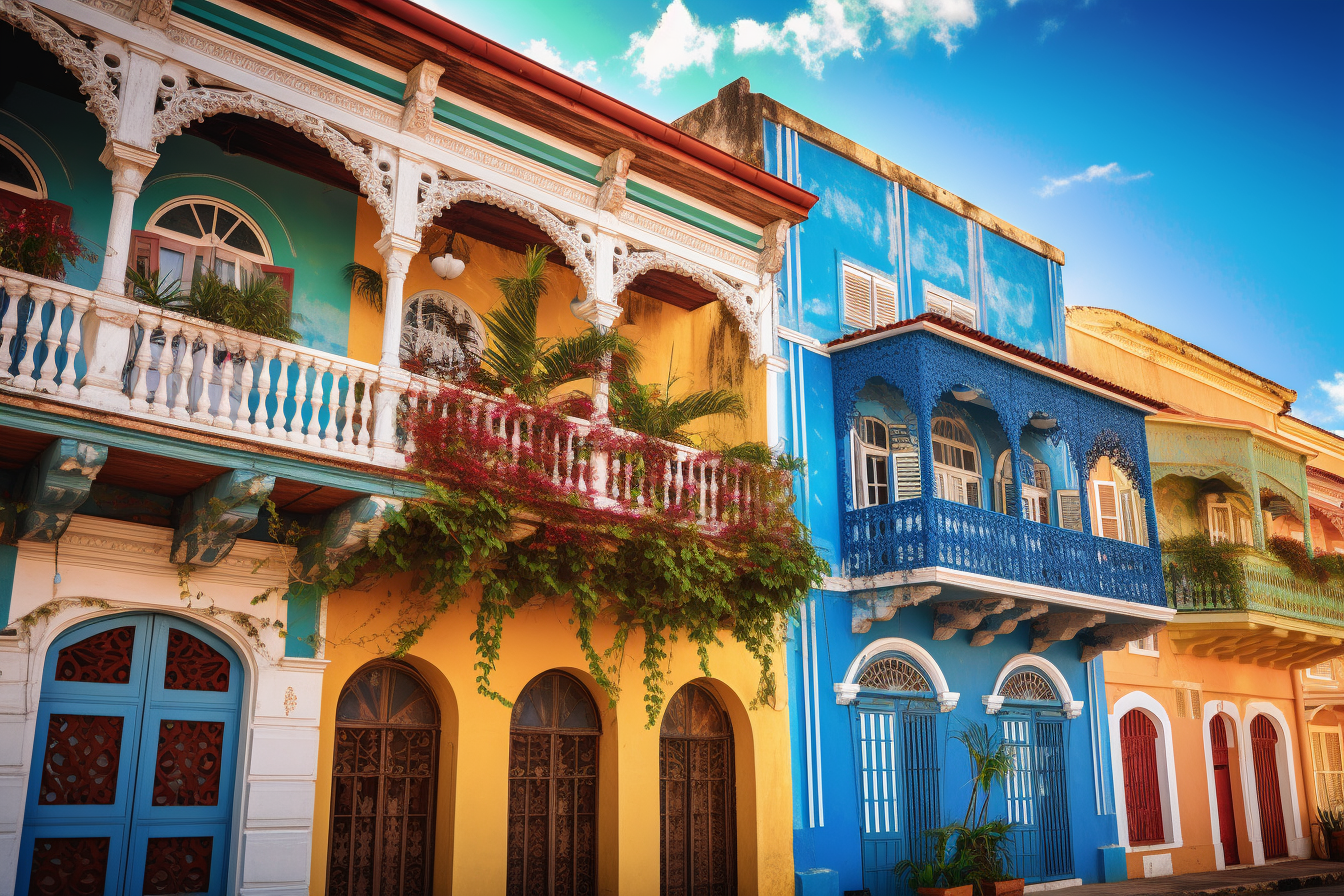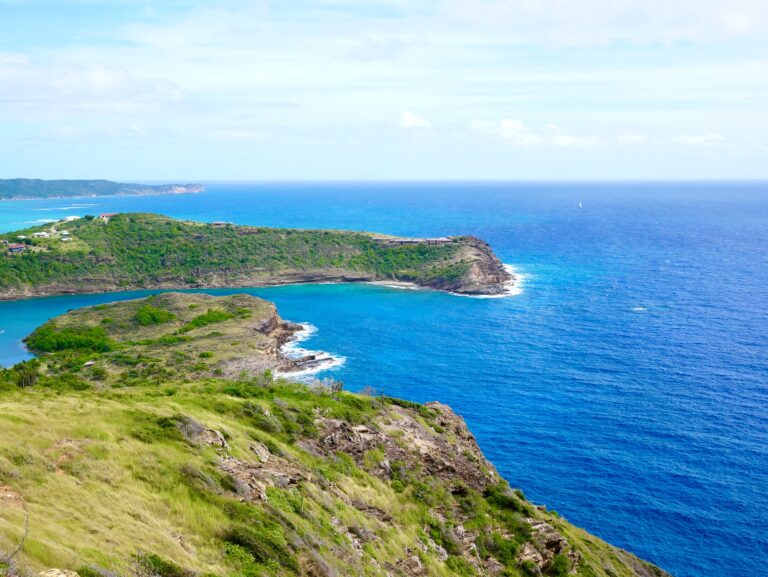Exploring The Rich History And Architecture Of Colonial Caribbean Cities
If you’re looking for a truly unique travel experience, exploring the rich history and architecture of colonial Caribbean cities is sure to satisfy your craving for adventure. From the colorful buildings of historic downtown areas to the imposing fortifications and citadels, the Caribbean has a rich architectural legacy that reflects centuries of colonialism, slavery, and trade.
As you wander through the cobblestone streets and marvel at the stunning facades of colonial-era buildings, you’ll begin to understand the complex history of the Caribbean and the cultural significance of its cities. Whether you’re a history buff, architecture enthusiast, or simply looking for a new and exciting destination to explore, the colonial Caribbean cities offer an immersive and unforgettable experience. So grab your camera, lace up your walking shoes, and get ready to experience the rich history and architecture of the Caribbean like never before.
The Legacy of Colonialism in the Caribbean
You’re going to love learning about the lasting impact colonialism had on this beautiful region. The Caribbean is a living testament to the historical consequences of colonization, and the architecture and cultural traditions that remain today are a reflection of this legacy. From the brightly colored buildings of Havana to the grand plantation homes of Jamaica, the region’s cities are steeped in history.
As you explore the Caribbean’s colonial cities, you’ll see how the architecture reflects the influence of European powers like Spain, Britain, and France. The distinctive colonial style is characterized by colorful facades, ornate balconies, and intricate wrought-iron details. But beyond the beauty of these buildings, you’ll also see how the colonial legacy shaped the region’s social and economic structures, leaving a lasting impact that is still felt today.
In the Caribbean, the legacy of colonialism is a reminder of the struggle for freedom and independence that has defined the region’s history. As you walk the streets of these cities, you’ll see how the past continues to shape the present, and you’ll gain a deeper understanding of the complex forces that have shaped this vibrant and diverse region. Whether you’re interested in history, architecture, or simply the beauty of the Caribbean, there’s no better way to explore this rich and fascinating legacy than by exploring its colonial cities.
The Impact of Slavery on Caribbean Architecture
Now let’s dive into how slavery shaped the very buildings and structures we see today in this part of the world. The Caribbean’s colonial architecture was built on the backs of enslaved people who were forced to construct grand mansions, churches, and government buildings. The impact of slavery on architecture is evident in the design and layout of these buildings, as well as the materials used to construct them.
For example, many of the grand houses in the Caribbean were built with large verandas, which were used to keep the inside of the house cool. These verandas were also used to keep an eye on the enslaved people who were working in the fields. The use of verandas in colonial architecture was a direct result of slavery, as it was necessary to have a space where slave owners could keep watch over their enslaved workers.
The impact of slavery on Caribbean architecture can also be seen in the use of locally sourced materials. Enslaved people were often forced to work in mines and quarries to extract the materials needed for construction. This meant that many of the buildings in the Caribbean were constructed using materials that were readily available in the region, such as coral stone and mahogany. The use of locally sourced materials was not only a result of the availability of these materials, but also a way to reduce the cost of construction and maximize profits for slave owners.
Fortifications and Citadels: Defending Colonial Caribbean Cities
The forts and citadels of this region were critical to protecting the interests of colonial powers. These imposing structures were built to safeguard the cities from pirate attacks and rival European powers. Fortresses like San Felipe del Morro in Puerto Rico and Fort Amsterdam in Curaçao served as important military bases, controlling access to the ports and harbors that were vital for trade and commerce. The construction of these fortifications also served to solidify the colonial presence in the region, as they were symbols of power and authority.
To fully understand the significance of these fortifications, consider the following:
- Many forts were built on high ground, providing a strategic vantage point to monitor the surrounding area and detect any incoming threats.
- The walls of these forts were often thick and reinforced with stone, making them difficult to breach.
- Most forts had a series of gates and drawbridges, which could be raised or lowered as needed to control access to the city.
- Some forts were equipped with cannons, which could be used to defend against enemy ships and bombard enemy positions on land.
These fortifications were an essential part of colonial life in the Caribbean. They served as a constant reminder of the precarious nature of life in this region, where threats from pirates, rival European powers, and local uprisings were always present. Despite their imposing presence, many of these fortresses were eventually abandoned or fell into disrepair after the colonial period. However, their legacy lives on as a testament to the ingenuity and determination of those who built them.
The Colorful Architecture of Historic Downtown Areas
As you stroll through the vibrant downtown areas of the region, you’ll be struck by the captivating and diverse styles of the colorful buildings that line the streets. The architecture of these historic buildings is a reflection of the cultural influences of the various colonial powers that once ruled the Caribbean. From the bright pastel hues of the Dutch colonial architecture in Curacao to the Spanish colonial-style buildings of Santo Domingo, each city has its unique charm.
One of the most striking features of the historic downtown areas is the use of bold, vibrant colors. This was a deliberate choice by the colonial powers, who believed that brightly painted buildings would help to distinguish them from the dull, monochromatic buildings of the indigenous population. Today, these colorful buildings are a much-loved part of the region’s cultural heritage, and many have been restored to their former glory.
As you explore the historic downtown areas of the Caribbean, take the time to appreciate the intricate details of the architecture. Look up at the ornate balconies and wrought-iron railings, and admire the unique features of each building. From the grandeur of the old colonial mansions to the simplicity of the traditional wooden houses, the architecture of the Caribbean is a testament to the region’s rich history and cultural diversity.
The Role of Trade in Shaping Caribbean Cities
You’ll gain a new perspective on the vibrant downtown areas of this region by understanding how trade has influenced their development. The Caribbean was a hub for trade during the colonial era, and this had a profound impact on the architecture and layout of many cities. The most prosperous cities were those strategically located near ports, where goods could be easily transported to and from Europe.
As a result of trade, many Caribbean cities developed a unique blend of architectural styles. The buildings were designed to accommodate the needs of merchants, traders, and sailors, resulting in a mix of European, African, and indigenous styles. For example, you’ll notice that the buildings in Bridgetown, Barbados, feature Georgian-style architecture, while those in Havana, Cuba, boast a mix of Baroque and neoclassical styles.
Trade also influenced the layout of Caribbean cities. Streets were designed to accommodate the flow of goods and people, with wider streets near ports and narrower streets in residential areas. This is why many Caribbean cities have a grid-like layout, with a central plaza or market square. Understanding the role of trade in shaping the architecture and layout of Caribbean cities will give you a deeper appreciation for their history and cultural heritage.
Cultural Significance of Caribbean City Architecture
Take a moment to immerse yourself in the vibrant and diverse cultural heritage of the Caribbean through its unique and captivating city architecture. From the colorful facades of buildings in Old San Juan to the ornate balconies of Cartagena, the architecture of Caribbean cities reflects a rich history of cultural exchange and colonialism.
One of the most significant influences on Caribbean city architecture is the blend of European and African styles. European colonizers brought with them Renaissance and Baroque architectural styles, which were adapted to the Caribbean climate and landscape. Meanwhile, enslaved Africans brought their own architectural traditions, such as the use of natural materials like straw and palm leaves for roofing.
Caribbean city architecture is not only visually stunning, but also serves as a reflection of the region’s cultural identity and history. It is a testament to the resilience of the people who have lived and built these cities over centuries, adapting to changing circumstances and creating new forms of beauty out of hardship and struggle. Exploring the architecture of Caribbean cities is not only a feast for the eyes, but also an opportunity to deepen one’s understanding of the region’s complex and fascinating past.
Exploring the Caribbean’s Lesser-Known Colonial Cities
If you’re looking for a deeper dive into the hidden gems of the Caribbean, this section uncovers the lesser-known cities that are just as captivating as their more popular counterparts. Beyond the bustling streets of Havana and the colorful buildings of San Juan, there are colonial cities that are just waiting to be explored. One such city is Santo Domingo, the capital of the Dominican Republic. With its cobblestone streets, historic architecture, and vibrant cultural scene, Santo Domingo offers visitors a unique glimpse into the Caribbean’s colonial past.
Another hidden gem is Bridgetown, the capital of Barbados. This city boasts a rich history and architecture that dates back to the 17th century. From the colorful buildings of the historic Garrison district to the impressive Parliament Buildings, Bridgetown is a city that is steeped in colonial history. Visitors can take a stroll along the picturesque boardwalk or explore the bustling markets and shops that line the city’s streets.
Lastly, there’s Willemstad, the capital of Curaçao. This city is a UNESCO World Heritage Site and is known for its stunning architecture, colorful buildings, and vibrant culture. With its Dutch colonial-style buildings and bustling waterways, Willemstad is a city that is sure to capture your imagination. Visitors can take a stroll along the picturesque Handelskade waterfront or explore the city’s many museums and galleries. Overall, these lesser-known colonial cities of the Caribbean offer visitors a chance to experience the region’s rich history and culture in a unique and unforgettable way.
Frequently Asked Questions
What was the main economic activity in colonial Caribbean cities?
The main economic activity in colonial Caribbean cities was the production of cash crops, such as tobacco, sugar, and coffee. These crops were grown on plantations, which were owned by wealthy landowners who employed enslaved Africans to work the fields. The profits from the sale of these crops fueled the growth of the cities, as the wealthy landowners invested in the construction of grand buildings and infrastructure. However, the system of slavery and exploitation that underpinned this economic activity was morally bankrupt and ultimately unsustainable. The struggle for freedom and equality that emerged from this history continues to shape the Caribbean region to this day.
What was the role of women in the development of Caribbean architecture?
When it comes to the development of Caribbean architecture, women played a significant role in shaping the landscape. While men were typically the ones who held the positions of architects and engineers, women often contributed to the design and construction process through their artistic skills and craftsmanship. They would create intricate decorations and designs, and were often responsible for the interior layout and decoration of homes and public buildings. Additionally, women were also responsible for the upkeep and maintenance of buildings, ensuring that they remained in good condition for years to come. Their contributions to Caribbean architecture may have gone largely unnoticed, but they were crucial in creating the beautiful and unique structures that still stand today.
How did indigenous peoples influence the architecture of Caribbean cities?
As you explore the intricate and fascinating architecture of the Caribbean, you cannot help but marvel at the influence of the indigenous peoples who lived there long before the arrival of colonial powers. From the vibrantly colored buildings of the Dominican Republic to the intricate stonework of Puerto Rico, the indigenous influence can be seen in every corner of these cities. The use of natural materials, such as stone and wood, as well as the incorporation of symbolic designs and patterns, all speak to the deep connection between the indigenous peoples and their environment. It is a testament to their ingenuity and creativity that their influence still echoes through the streets today, reminding us of the rich and diverse history of this region.
What was the impact of European wars on Caribbean cities?
When exploring the impact of European wars on the Caribbean cities, you’ll find that they played a significant role in shaping the region’s architecture and history. The wars between European powers resulted in the colonization of the Caribbean, leading to the construction of forts, citadels, and other military structures that still stand today. These structures were designed to protect the European powers’ interests in the region, and they left a lasting impact on the Caribbean’s architecture. Additionally, the wars also led to the transatlantic slave trade, which brought enslaved Africans to the Caribbean, resulting in the development of distinct cultural and architectural styles. The impact of European wars on the Caribbean cities is a complex and fascinating topic that sheds light on the region’s rich history and architecture.
What is the current state of preservation of colonial architecture in the Caribbean?
Did you know that only about 25% of the colonial architecture in the Caribbean has been preserved? This startling statistic highlights the urgent need for increased efforts towards conservation and restoration. Many historic buildings are at risk of being lost forever due to neglect, natural disasters, and development pressures. However, there are also success stories of communities coming together to protect their cultural heritage. As you explore the rich history and architecture of colonial Caribbean cities, it is important to consider the current state of preservation and the importance of preserving these tangible links to the past for future generations.
Conclusion
You’ve just taken a journey through the rich history and architecture of colonial Caribbean cities. From the legacy of colonialism to the impact of slavery on Caribbean architecture, you’ve explored the many factors that shaped the unique buildings and structures found throughout the region.
As you reflect on your journey, you can’t help but be struck by the colorful architecture of historic downtown areas, the imposing fortifications and citadels that defended colonial Caribbean cities, and the cultural significance of Caribbean city architecture. The role of trade in shaping these cities is also evident, as you’ve seen how commerce and industry played a key role in their development.
Overall, exploring the Caribbean’s lesser-known colonial cities has been a truly enlightening experience. You’ve gained a deeper appreciation for the rich history and unique architecture of this fascinating region, and you can’t wait to continue exploring all that it has to offer. So go ahead and plan your next adventure, and get ready to be immersed in the sights, sounds, and stories of colonial Caribbean cities.





One Comment
Comments are closed.